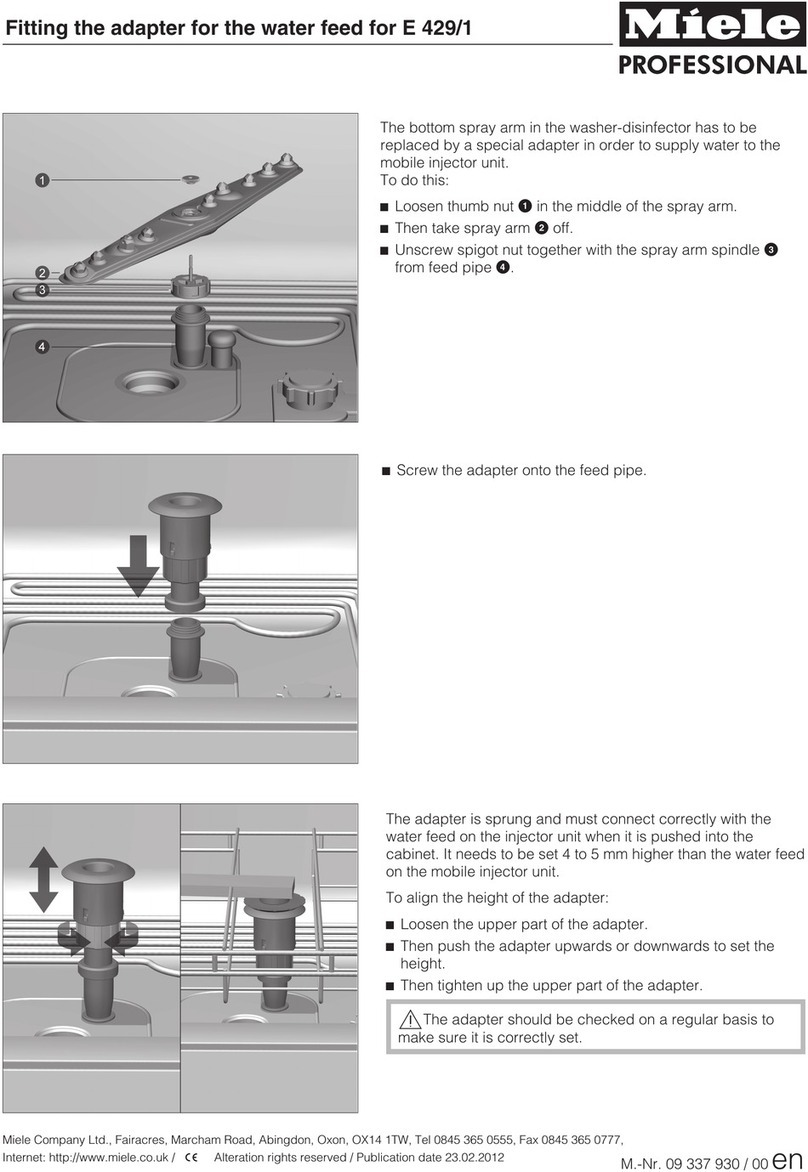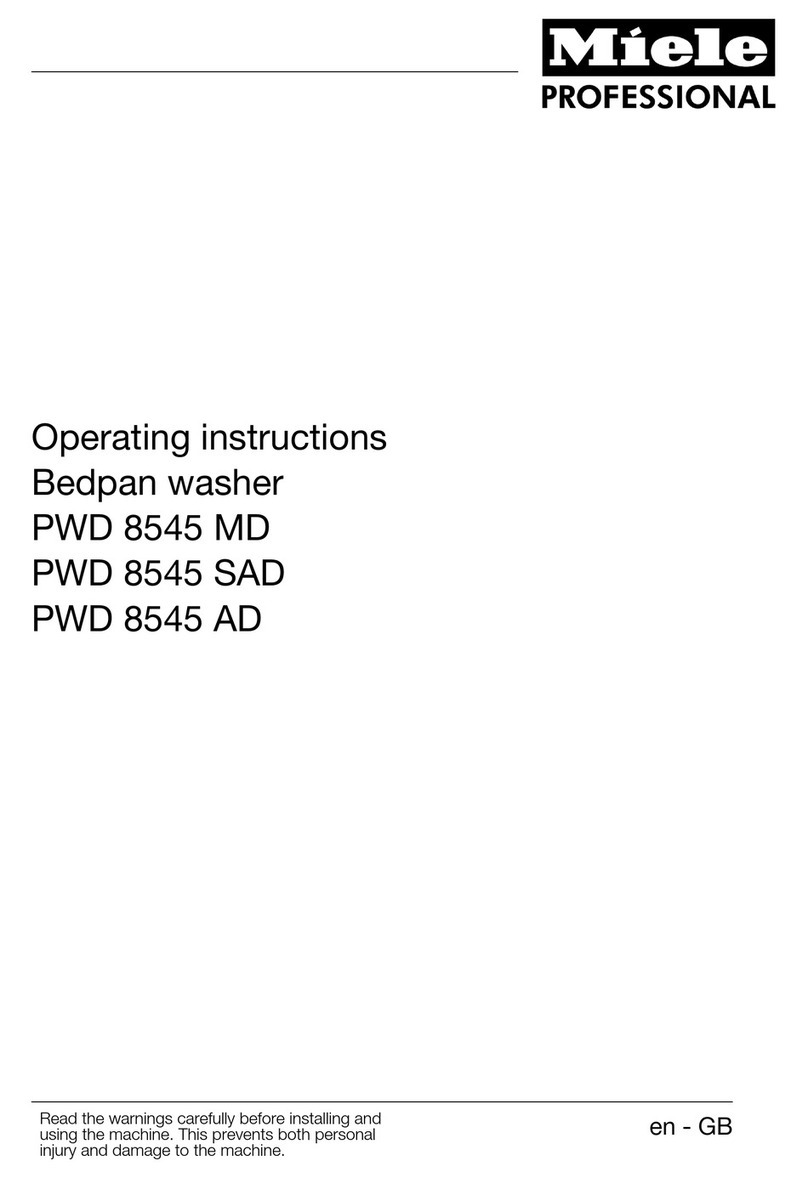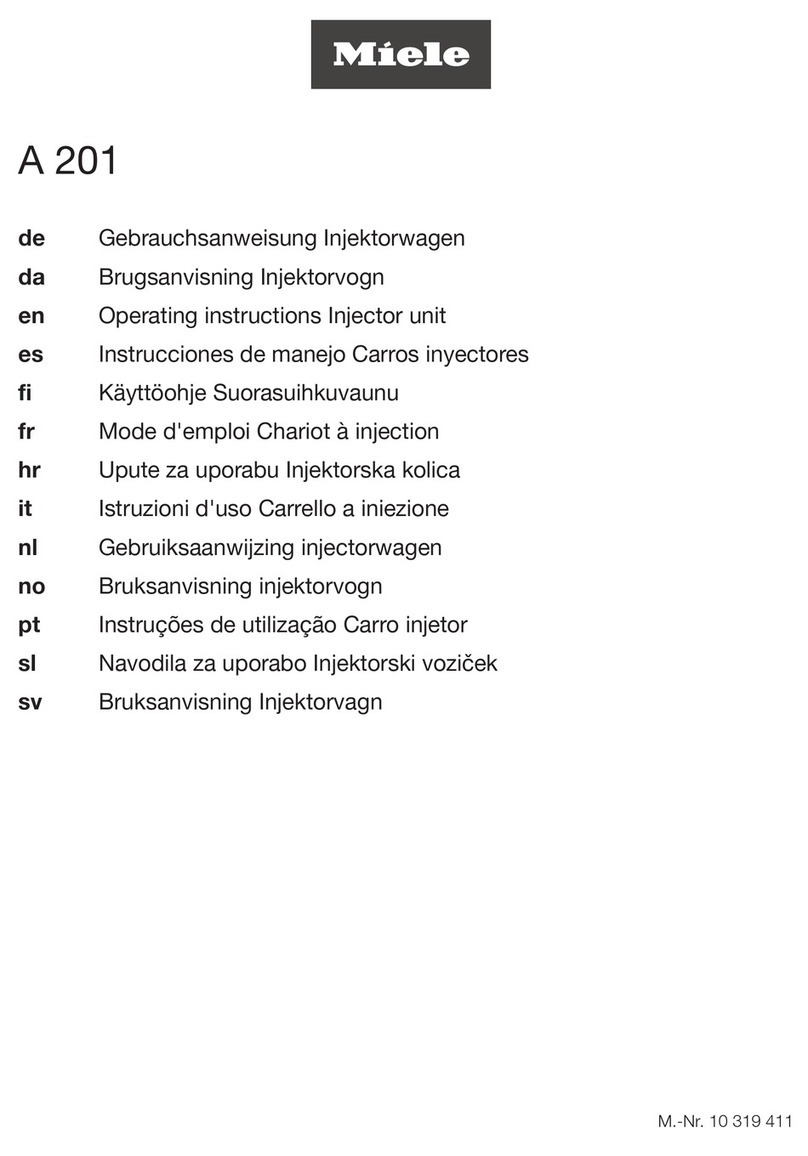~Always exercise caution when
handling processing chemicals for this
machine (cleaner, neutralizer,
saponifier, rinsing agent, etc.). These
may contain irritant or corrosive
ingredients. Observe the applicable
safety regulations! Wear protective
gloves and goggles! Always follow the
manufacturer's safety instructions and
material safety data sheets when using
processing chemicals.
~The washer is only designed to
operate with water and the
recommended processing chemicals.
NEVER use organic solvents or
flammable liquids. These could cause
an explosion or damage to rubber and
plastic components, which results in
leaks.
~Avoid inhaling powdered products.
Never swallow cleaning agents,
because this can result in chemical
burns to the mouth and throat, and
suffocation.
~The water in the machine is not safe
to drink!
~Do not stand, sit or lean on the
machine door when open. The
appliance might tip over or be
damaged.
~Take care when loading items with
sharp pointed ends. Position them in
the machine so that you will not hurt
yourself or create a danger for others.
~When operating this machine, be
aware of the high temperatures
involved. If you bypass the electrical
lock to open the door, there is the
danger of scalding and heat or
chemical burns. If disinfectants have
been used, there is also a risk of
inhaling toxic vapors.
~If toxic chemicals may be present in
the wash cabinet (e. g. aldehydes in
the disinfectant), the door seal and, if
applicable, the steam condenser must
regularly be checked for soundness.
Opening the washer door during a
program interruption is particularly
dangerous when toxic chemicals are
present.
~If you are exposed to toxic vapors or
processing chemicals, consult the
manufacturer's material safety data
sheets for emergency procedures.
~Always allow baskets, inserts and
the washload to cool down. Empty any
water from hollow items into the wash
cabinet.
~Do not touch the heating elements
when you open the door during or at
the end of a program. They remain hot
for quite a few minutes after the
program has ended and can cause
burns.
~NEVER hose down the machine or
the immediate vicinity, e.g., with a water
hose or pressure washer.
~Before servicing the machine,
disconnect it from the power supply.
Safety instructions and warnings
6































